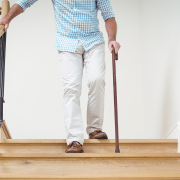Care About Your Care, a new initiative to empower patients!
I wanted to share this IHealth Beat Article on a new Initiative: Care About Your Care. It is fantastic to see all of this involvement and dedication to this ever-present healthcare crisis! This is something we are extremely passionate about. It’s clear that we cannot continue on with the reactive care model. We need to take a cue from Benjamin Franklin “An ounce of prevention, a pound of cure” and start providing proactive solutions and enabling individuals to actively participate in their own management of chronic conditions. GrandCare Systems is proud to be an active proponent of Preventative Care technology using telehealth, med dispensers, reminder/cognitive assists, Activity of Daily Living Sensing, One-Touch SKYPE, brain fitness & Internet socialization in one interactive solution. We look forward to staying engaged in this topic and hope GrandCare will be able to play a large role in transitioning clients to a NEW model of proactive, preventative & INFORMED care! Take a look below..perhaps someday soon we will all be having this conversation on the Dr. Oz show 🙂
…
![]()
Monday, September 19, 2011
Health IT Key to Patient Engagement, Better Care, Experts Say
by Kate Ackerman, iHealthBeat Managing Editor
WASHINGTON — The Robert Wood Johnson Foundation, the Office of the National Coordinator for Health IT and the Agency for Healthcare Research and Quality have teamed up on a new initiative aimed at boosting patient engagement in an effort to improve the quality of health care in the U.S. Health care experts argue that patient empowerment is key to driving health care improvements.
Risa Lavizzo-Mourey, president and CEO of RWJF, said in a news release, “Patients need to understand that the quality of health care varies widely across the nation — even within communities — and there are things they can do to ensure they and their loved ones get the best care possible.” She added that “it is critical that we all do our part as patients to take responsibility for our own health and care, like learning more about our illness, taking care of ourselves and following recommendations from our doctors and nurses.”
At an event on Thursday marking the midpoint of the monthlong project, called Care About Your Care, health care leaders discussed how patients can play an important role in helping to address health care cost and quality issues.
Dr. Mehmet Oz — host of the Dr. Oz show and vice chair and professor of surgery at Columbia University — moderated the event. He said, “I honestly believe that being a smart patient is a matter of life and death.” Oz added that “patients have duties” and that “empowered patients challenge doctors” to deliver the highest quality of care.
Giving Patients Access to Their Data
National Coordinator for Health IT Farzad Mostashari said one of the goals of his office is to help patients get access to information. He said that if patients are being asked to take an active role in their health care, they need to have access to their medical information.
However, he acknowledged that the effort will require a shift in thinking. Mostashari noted that some patients feel uncomfortable even asking for their health care records. He said that it is important to send the message that asking for health records “not only is your legal right, but it is the right thing to do.”
Lavizzo-Mourey added that when patients use IT to track their care, the result is better care.
After hearing from Shanda Reardon — a woman in Southeast Michigan who spoke about how her family history of diabetes drove her to take a more active role in her own health — AHRQ Director Carolyn Clancy said that patients should feel empowered to ask questions. She added that if they do not understand the answers, they should ask again.
Role of Health IT
The health care leaders said health IT can play a key role in facilitating patient engagement and patient-centered care.
Mostashari said that his office is “helping doctors, hospitals and communities … to use computers to take better care of people.” He said that an increasing number of health care providers are electronically exchanging patient information, which can help to improve care transitions. However, he said that number still is not high enough, and, as a result, patients are being called on to fill in any gaps in their health records.
Mostashari said that new models of delivering care — such as online visits and smartphone health care applications — will help address the cost issue.
Clancy agreed, noting that it is possible to “spend less for high-quality care” by achieving savings through better care coordination.
Mostashari added that health IT allows health care providers and others to measure and monitor care.
Lavizzo-Mourey said that communities across the country are “using information to raise the bar.”
Peter McGough — chief medical officer at the University of Washington Medicine Neighborhood Clinics in Seattle — said that providing doctors with information at the time of care through electronic health records has led to fewer complications and lower costs.
Mostashari said that health plans — including Medicaid and Medicare — are beginning to recognize and reward health care providers for better quality care and care coordination.
Lavizzo-Mourey said the “transformation in health care is happening” and “consumers need to be involved.” She added, “It’s going to take all of us to really improve the quality of care.”



 by Laura Mitchell, VP Marketing, GrandCare Systems
by Laura Mitchell, VP Marketing, GrandCare Systems.jpg)
 Home healthcare, an essential ingredient of post-acute care, can help people recover from injury or illness faster, which ultimately can prevent relapses that leads to an emergency room visit or hospital readmissions. Increasingly, home devices are being used to monitor the health status and vital signs of patients; at the same time, there also has been an explosion of mobile apps that can work with such devices, smartphones, and/or tablets to aid consumers in managing their own health. Both of these developments hold promise for improving post-acute and chronic care.
Home healthcare, an essential ingredient of post-acute care, can help people recover from injury or illness faster, which ultimately can prevent relapses that leads to an emergency room visit or hospital readmissions. Increasingly, home devices are being used to monitor the health status and vital signs of patients; at the same time, there also has been an explosion of mobile apps that can work with such devices, smartphones, and/or tablets to aid consumers in managing their own health. Both of these developments hold promise for improving post-acute and chronic care.

